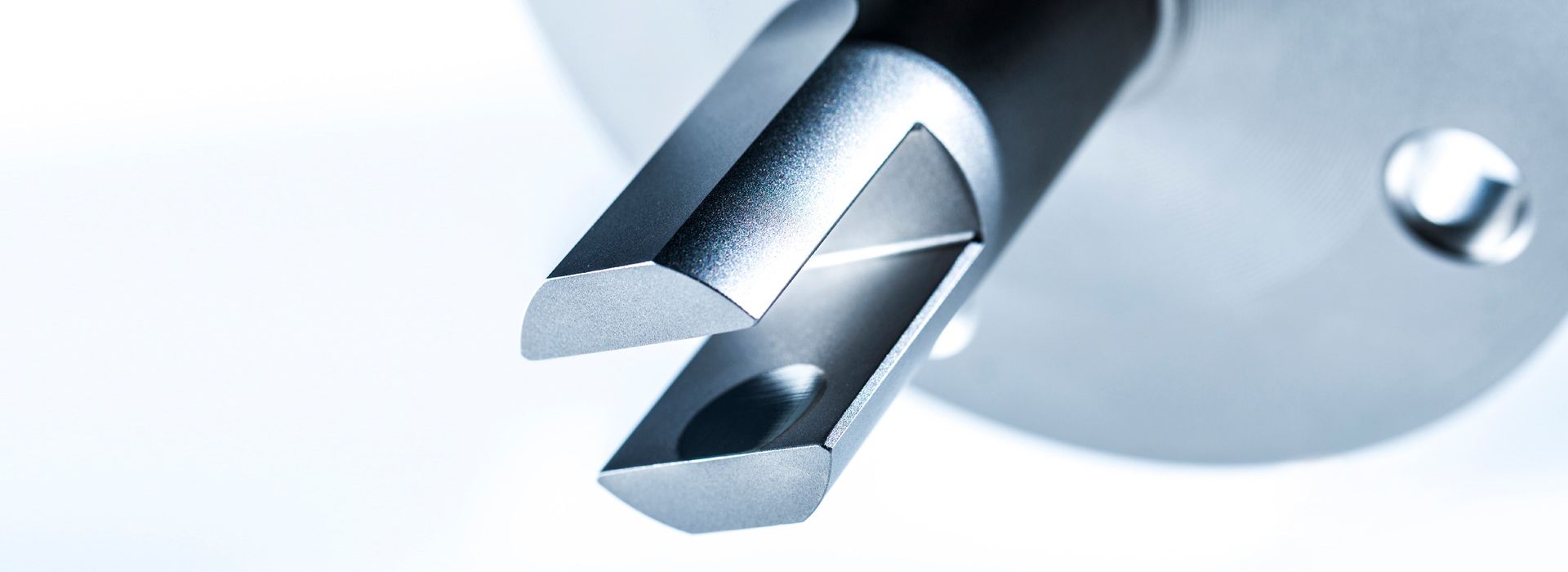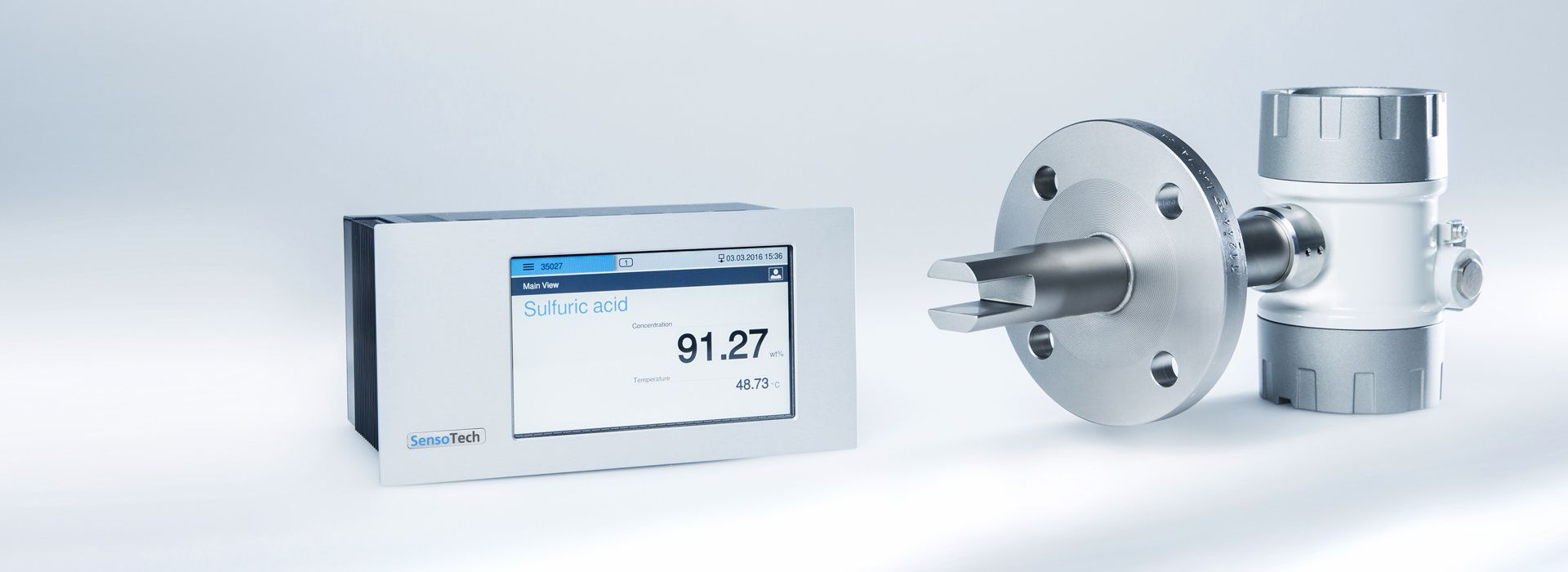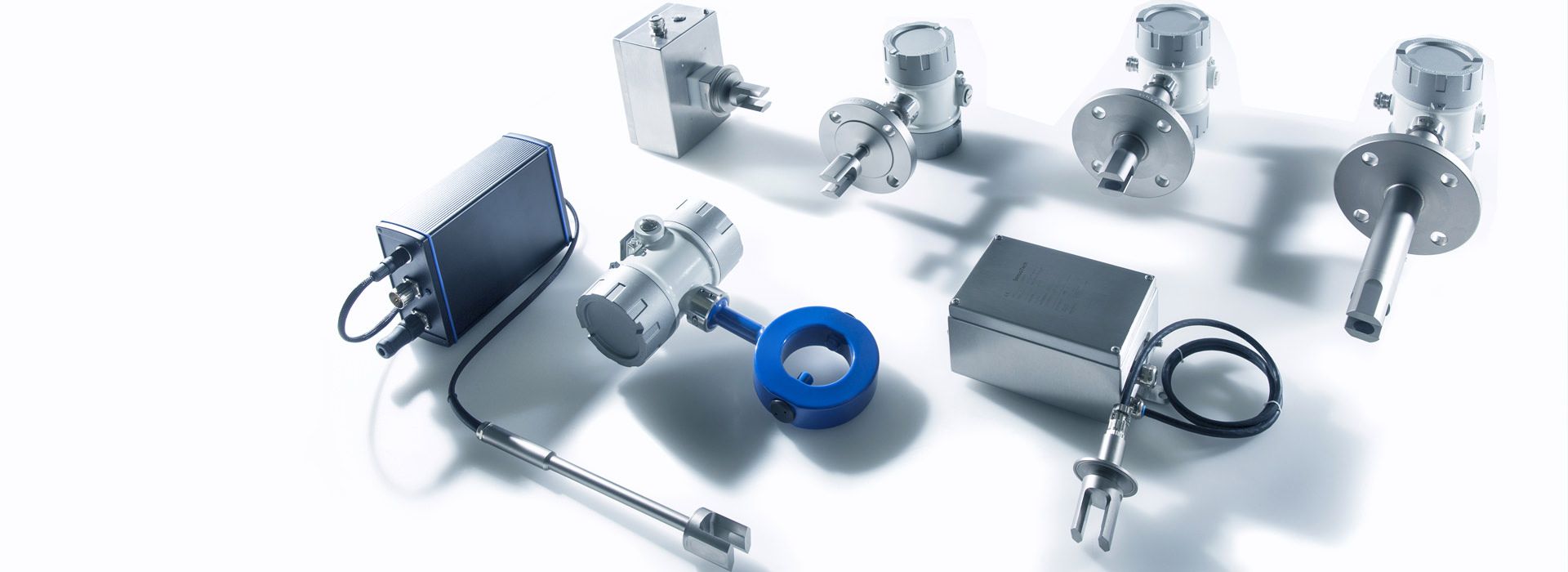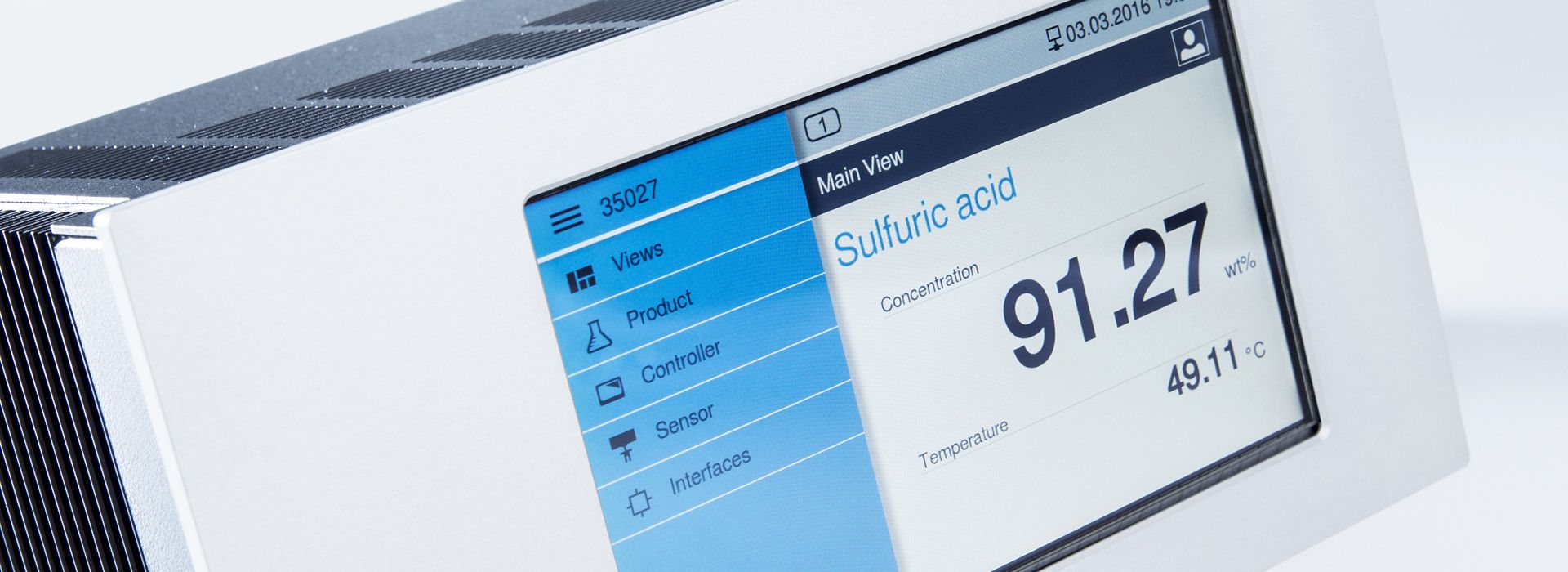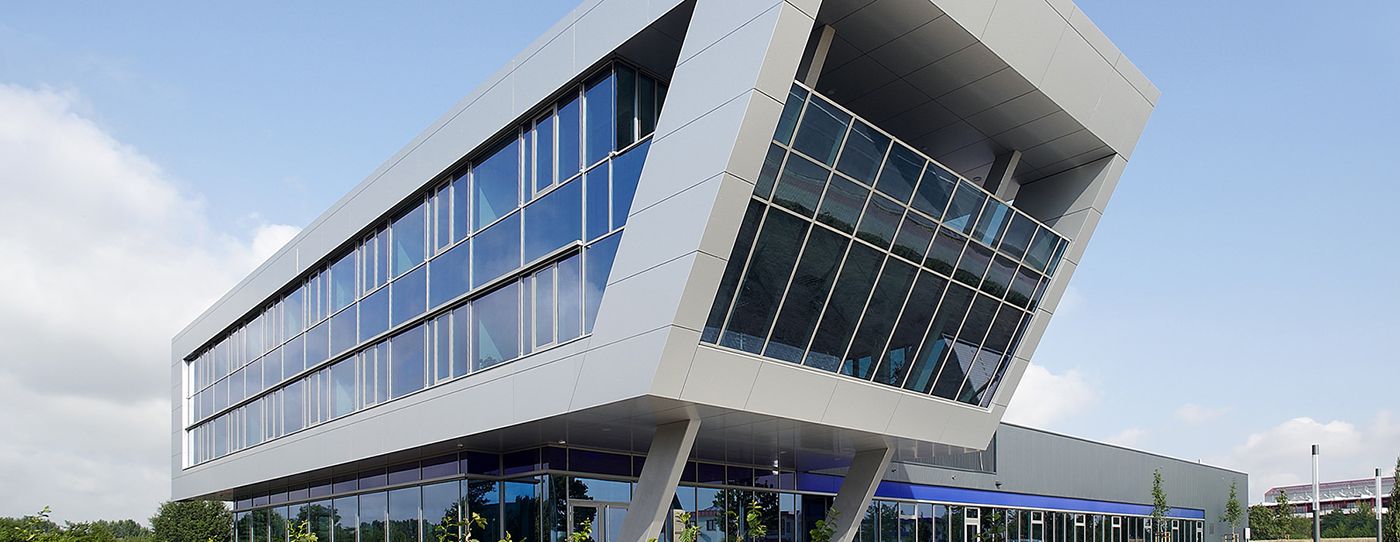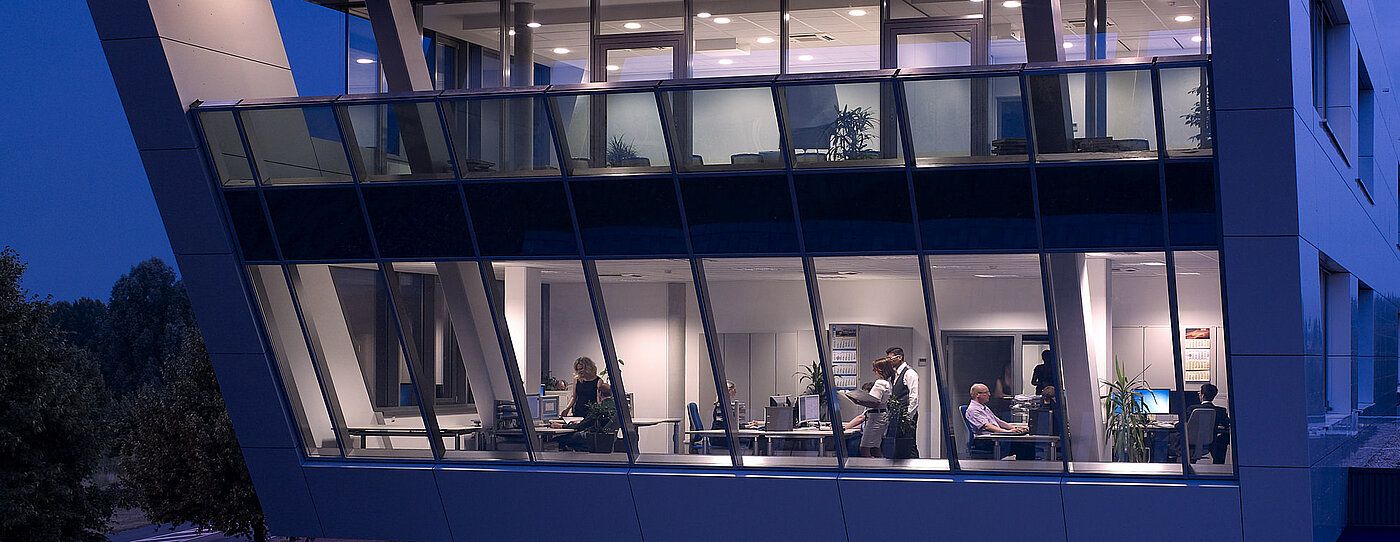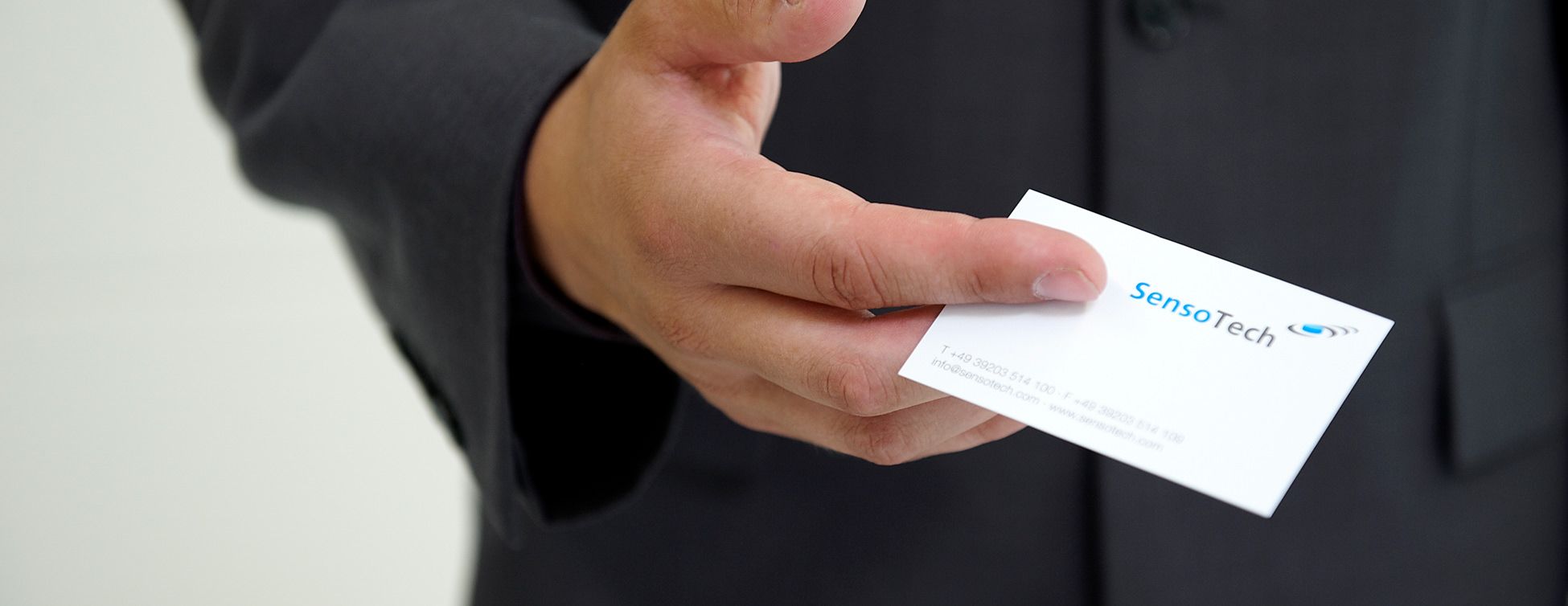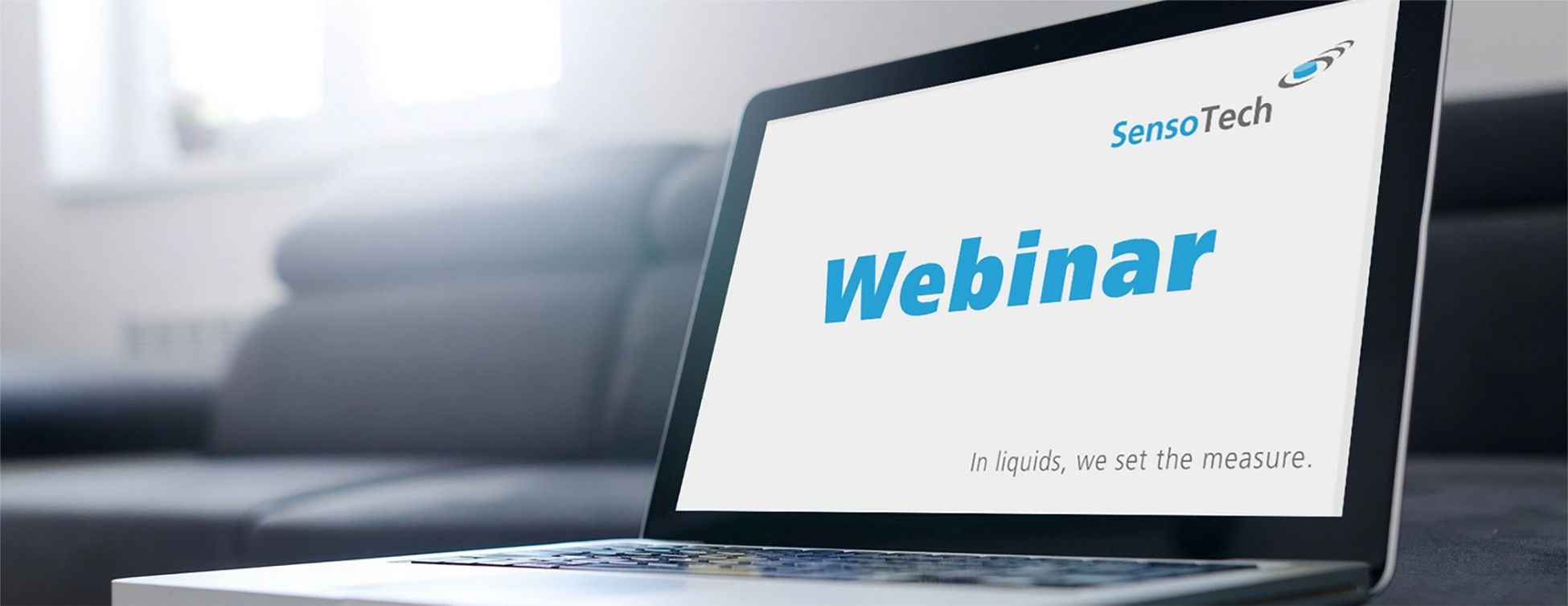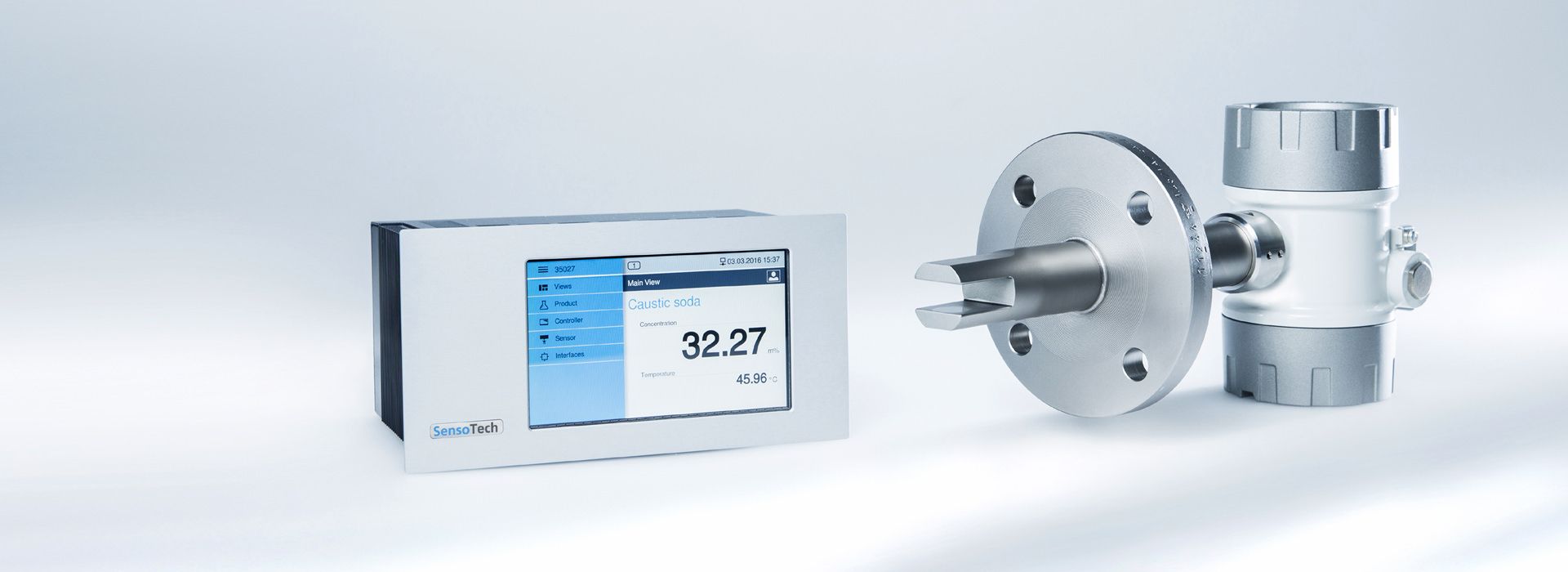Chlorine gas drying
The LiquiSonic® Measurement technology is used in various processes and production streams to detect concentration and thus optimize quality and productivity. Another application field of the measurement technology is in the downstream process of chlorine gas drying. The chlorine gas must be freed from its water content, otherwise, it leads to the formation of chlorine hydrate and the corrosion behavior continuously increases at a moisture content above 30 ppm.
Advantage of sound velocity over conductivity and density
Application
The process of chlorine gas drying is based on the passage of the gas through the absorption towers (scrubbers), where the water content in the chlorine gas is chemically bound by concentrated sulfuric acid (H2SO4) Sulfuric acid is used as a drying agent because it has hygroscopic properties, meaning a strong attraction to water.
The moist chlorine passes through several scrubbers during drying, with the concentration of H2SO4 increasing from scrubber to scrubber. The higher the H2SO4- is concentrated, the higher the absorption efficiency (or drying effectiveness). In this regard, the last scrubber contains a highly concentrated H2SO4 (90 – 96%), as the water content in the chlorine gas is reduced to less than 30 ppm. By removing the water content in the chlorine gas, the sulfuric acid in the scrubbers becomes diluted. The diluted H2SO4 is then directed to the previous scrubbers with lower H2SO4 concentrations.
The effectiveness of this drying process significantly influences the productivity and quality of the gas. Therefore, reliable measurement of the sulfuric acid concentration is of particular importance.
The measurement system LiquiSonic® 30 enables the measurement of sulfuric acid concentration using sound velocity as well as highly accurate temperature measurement. Through inline concentration analysis with LiquiSonic® sensors the process of chlorine gas drying can be analyzed around the clock and guarantees an exact real-time analysis of the sulfuric acid concentration. Through precise monitoring of the sulfuric acid concentration in the respective absorption towers using the measurement system LiquiSonic® 30 the desired effectiveness of chlorine gas drying is ensured at all times.
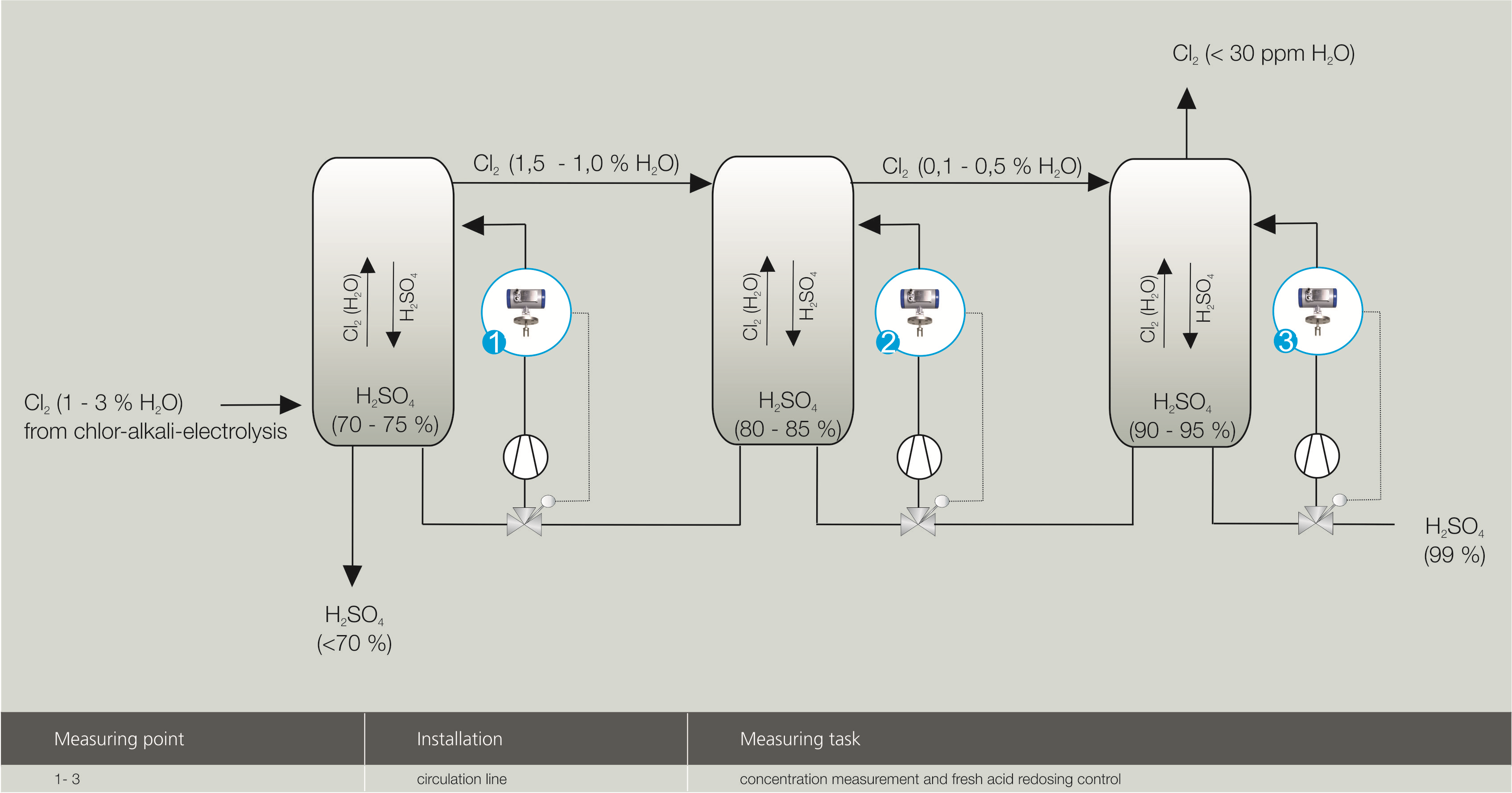
Installation
The installation of the sensors takes place in the DN80 transport lines of the absorption towers.
Concentration range H2SO4: 70 wt% to 100 wt%
Temperature range H2SO4: 20 °C to 60 °C
When used in sulfuric acid, the liquid-contacting parts of the sensor are made of HC2000.
Customer benefit
LiquiSonic®enables a reduction in laboratory costs by eliminating manual sampling:
- Time required: 3 hours per day
- Amortization: approximately 7 months
To protect plant components from corrosion, the water content in the chlorine gas must be less than 30 ppm. By continuously monitoring the sulfuric acid in the respective scrubber, the required purity of the chlorine gas (less than 30 ppm H20) can be ensured.
Chlorine is one of the most important basic chemicals and is among the most produced chemicals worldwide. Chlorine is industrially produced through the chlor-alkali electrolysis. The starting material for electrolysis is an aqueous sodium chloride solution (NaCl). By-products include hydrogen and caustic soda, which are also further processed in large quantities by the chemical industry. In the chlor-alkali process, different electrolytic methods are used, with the diaphragm, membrane, or amalgam process being themost common production technologies.
